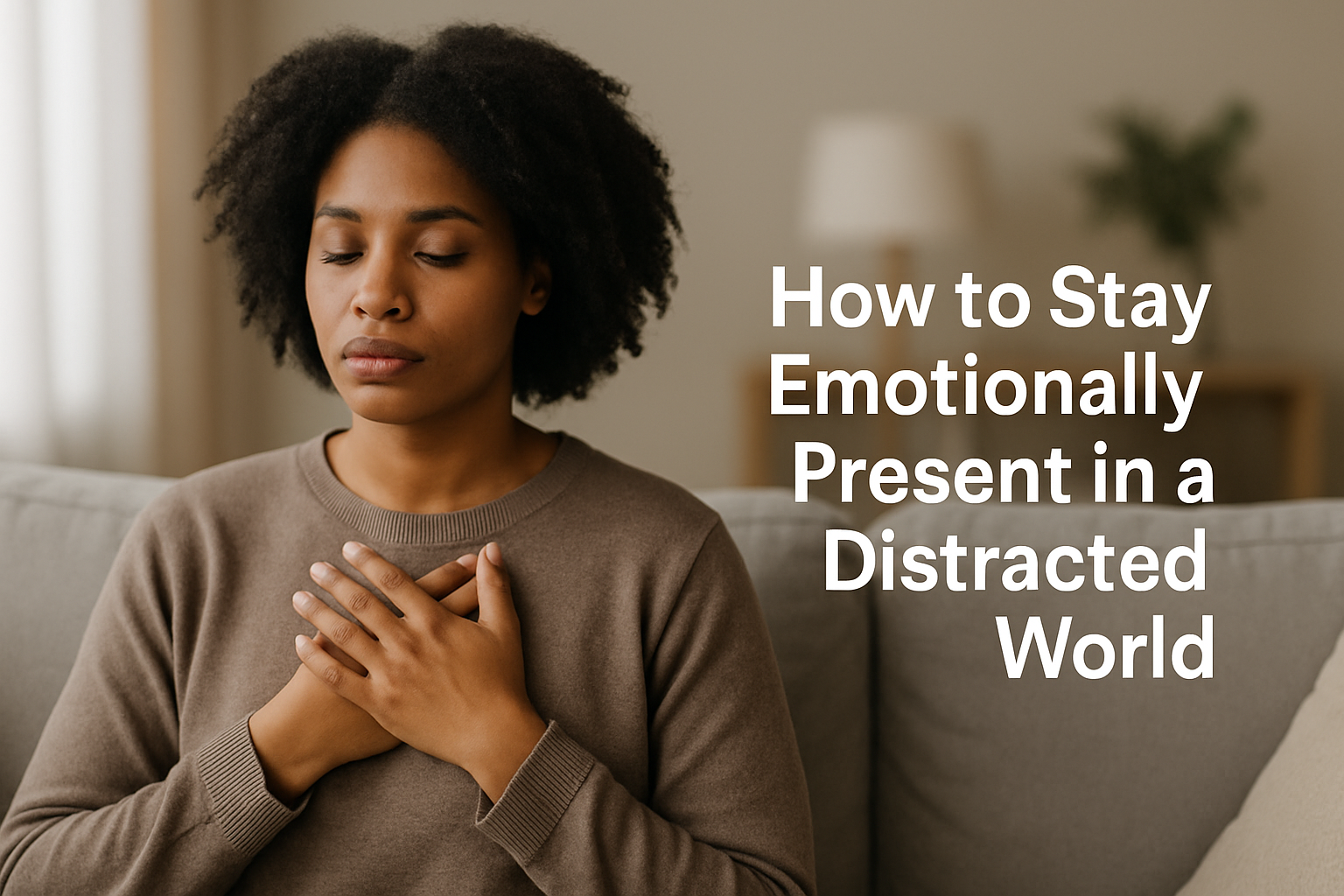In a time when attention is constantly pulled in multiple directions, staying emotionally present can feel like a challenge. Notifications, multitasking, endless to-do lists, and constant stimulation make it easy to become mentally fragmented and emotionally distant — even from ourselves. But presence is the foundation of connection, inner peace, and authentic living. The more present you are, the more alive you feel.
What Does It Mean to Be Emotionally Present?
Emotional presence means being fully engaged with what you’re feeling, experiencing, and doing — without escaping, numbing, or drifting. It’s the practice of showing up in each moment with awareness and compassion. This doesn’t mean you always feel calm or happy — it means you’re willing to be with whatever is true for you, without distraction.
Why Presence Is Hard Today
The modern world is designed for distraction. Apps, alerts, and overstimulation train your brain to constantly switch focus. Emotional presence requires the opposite — slowing down, listening inward, and allowing stillness. Without intentional effort, it’s easy to spend your days disconnected from your emotions, your body, and your deeper needs.
Start by Noticing Disconnection
Begin by observing when you check out. Do you scroll when you’re uncomfortable? Work non-stop to avoid emotions? Zone out during conversations? These habits aren’t bad — they’re protective. But noticing them is the first step toward presence. Ask: “Where am I right now — in my body, or in my head?”
Use Anchors to Return to the Moment
Simple anchors bring you back to now:
- Your breath — take three slow, deep inhales and exhales
- Your senses — name what you can see, hear, and feel
- Your body — place a hand on your chest or heart
These small gestures remind you that presence isn’t found in the future or the past — it’s right here.
Be Fully With One Thing at a Time
Practice presence through single-tasking. Whether eating, walking, listening, or resting — do one thing with full attention. Resist the urge to check your phone or rush. When you slow down, you start to feel more connected, more grounded, and more at peace.
Allow Your Emotions to Exist
Emotional presence means allowing your feelings — without fixing, judging, or numbing. If you’re sad, let yourself feel it. If you’re anxious, breathe through it. Emotions are temporary messengers, not permanent states. The more you allow them, the faster they move through you.
Practice Deep Listening
When talking to someone, give your full attention — no multitasking, no mentally planning your response. Just listen. Being truly heard is rare and powerful. And when you listen deeply to others, you also learn how to listen more closely to yourself.
Create Tech-Free Moments
Designate times and spaces in your day that are phone-free. For example:
- First 30 minutes after waking
- During meals
- Before bed
- One hour a day for screen-free solitude
These moments reconnect you with your environment, your thoughts, and your emotions without digital noise.
Let Go of the Need to Escape
We often avoid presence because it feels uncomfortable — silence can be awkward, emotions can be intense, and stillness can feel unproductive. But staying with what is, even when it’s uncomfortable, builds emotional strength. Remind yourself: “I can be with this moment, just as it is.”
Final Thought: Presence Is the Gateway to Peace
In a distracted world, emotional presence is an act of courage. It’s choosing to come home to yourself over and over again — no matter how noisy life gets. When you live present, you live fully. You feel more, connect deeper, and move through your days with intention instead of autopilot. And that changes everything.
